Tired of that outdated bathroom tile? Imagine stepping into a spa-like haven after a refreshing tile makeover! But before you grab the sledgehammer (carefully!), there’s one crucial step: measuring your space for tiles.
Accurate measurements are the golden ticket to a smooth tiling project. Why? Underestimating the amount of tile you need can lead to delays and extra trips to the store. On the other hand, overestimating means you’ll be left with leftover tiles and a lighter wallet.
No worries, Hightiles is here to help you conquer your tiling project with confidence. In this guide, we’ll walk you through the easy steps of measuring your space for tiles, ensuring a beautiful and stress-free renovation. Let’s get started!
Measuring the Area for Tiling
So you’re diving into the world of tiling! Before you hit the store and grab a mountain of tiles, there’s one crucial step: measuring the area you’ll be transforming. Here’s how to measure floors and walls like a champ, ensuring you get exactly what you need (and maybe even a little extra for those inevitable “oops” moments).
Floors:
Length and Width: The Classic Combo: Grab your trusty measuring tape and get ready for some geometry! Measure the longest straight side of the floor (the length) and then the distance across it (the width). Write these measurements down – they’ll be your golden tickets.
Respect the Irregular Shapes: Life isn’t always a perfect rectangle, and neither are some floors! Toilets, bathtubs, and other quirky corners can throw a wrench in your calculations. Don’t sweat it! Just measure each irregular section separately and subtract it from the total floor area later.
Diagonal Dilemma (Optional): Feeling fancy and going for a diagonal tile pattern? The basic principle remains the same – measure the length and width of the floor. However, some tile calculators might require the actual floor diagonal measurement. In that case, grab the Pythagorean theorem (remember that from high school?) and crunch some numbers to find the diagonal distance.
Walls:
Height and Width: The Wall Duo: Similar to floors, measure the height and width of each wall you plan to tile. Remember, consistency is key! Use the same unit of measurement (meters, centimeters, etc.) throughout for easy calculations.
Windows and Doors: Not Your Tiling Friends: While we love a good window or doorway, they’re not exactly helpful when it comes to tiling. To avoid buying unnecessary tiles, measure the width and height of each window, door, or any other permanent fixture on the wall. Then, subtract this area from the total wall area you calculated earlier.
Now that you’ve mastered the art of measuring, you’re well on your way to a perfectly tiled masterpiece! Remember, it’s always better to have a little extra tile than to run out halfway through the project.
Calculating the Number of Tiles Needed
Tiling your floor or walls can be a rewarding DIY project, but before you dive in, you need to figure out how many tiles to buy. Don’t worry, it’s not rocket science! Here’s a quick guide to get you prepped:
Area Calculation:
Imagine wrapping a giant sheet of paper over the entire area you want to tile. The size of that paper, measured in square feet or meters, is the area you need to cover. To get this magic number, simply multiply the length by the width of the area you’re tiling.
For example, if your bathroom floor is 2.44 meters long and 1.52 meters wide, the area would be 2.44 m x 1.52 m = 3.71 square meters.
Tiles per Square Unit: How Many Tiles Cover Your Area?
This is where your chosen tile comes in! Every tile package will tell you how many tiles it covers per square meter or foot. This is usually indicated as “tiles per square meter” or “tiles per square foot” (e.g., 10 tiles/sq m).
Here’s a handy tip: Make sure to note the measurement unit (square meters or feet) on the tile packaging so you can match it to your calculations.
Rounding Up and Wastage:
The number you got from multiplying area and tiles per unit gives you a theoretical number of tiles needed. But in reality, you’ll almost always need a few extra. Why? Because:
Cutting tiles: You’ll likely need to cut tiles to fit around corners and edges.
Mishaps: Oops happens! A cracked tile here or a broken one there can quickly eat into your supply.
To avoid running out halfway through your project, experts recommend buying 10-15% more tiles than your calculation suggests. This buffer covers wastage and ensures you have enough tiles to complete the job.
Example
Let’s revisit our 3.71-square-meter bathroom floor. Imagine the tiles you’ve chosen cover 10 tiles per square meter (written as 10 tiles/sq m). Here’s how to find the number of tiles to buy:
Area calculation: We already established the floor area is 3.71 square meter.
Tiles per square unit: The tiles cover 10 tiles/sq m (but remember, your bathroom floor is in square meter!).
Adjust units: To compare apples to apples, we need the tile info in square meter. Look for a similar tile on hightiles.co.uk that might show tiles per square meter.
Ideal number of tiles: Let’s say the conversion gives you 4 tiles/sq m (hypothetical value). Multiply this by the floor area (10 sq m) to get 10 sq m x 4 tiles/sq m = 40 tiles (without rounding up for wastage).
Rounding up for wastage: Add 15% extra tiles to account for cutting and mishaps. So, 0.15 x 200 tiles = 30 extra tiles.
Total number of tiles to buy: Add the extra tiles to the ideal number: 200 tiles + 30 extra tiles = 230 tiles.
Remember: This is an example, and your actual number of tiles will vary depending on your specific tile size, floor area, and wastage. But this process will give you a solid foundation to estimate how many tiles to buy for your tiling project!
Additional Tips and Considerations
Planning for Complex Layouts
While simple layouts like straight grids are easy to manage, complex patterns like basketweave or pinwheel might require some extra planning. To avoid installation headaches, consider creating a layout plan on paper beforehand. If you’re envisioning a truly intricate design, consulting a professional tile installer can ensure a stunning and frustration-free outcome.
Simplify with Online Tile Calculators
Taking the guesswork out of tile quantity is easy with online tile calculators! These handy tools help you estimate the number of tiles you’ll need based on your floor dimensions and desired layout. This can save you time, money, and those last-minute trips to the store for extra tiles.
Invest in High-Quality Tiles
When it comes to tiling your floor, using high-quality materials goes a long way. Not only will your finished floor look polished and beautiful, but you’ll also save on tile in the long run. Here’s why: fewer cracks and breaks during installation mean less wasted tile!
Conclusion
You mastered the art of spreading thin sets and laid those tiles with precision. Now, you’ve got a stunning, functional space that reflects your hard work and creativity. High five!
At Hightiles, we’re all about empowering DIYers with top-notch products and all the resources you need to conquer tiling projects. We’ve got a vast selection of beautiful tiles, top-of-the-line tools, and tons of helpful guides on our website – from choosing the perfect grout to mastering cutting techniques.
Ready to keep the DIY spirit alive? Explore our extensive product range and dive into our library of tiling resources. We’ve got everything you need to transform your next space into a masterpiece!

 Bathroom Wall Tiles
Bathroom Wall Tiles Bathroom Floor Tiles
Bathroom Floor Tiles Shower Room Tiles
Shower Room Tiles Wet Room Tiles
Wet Room Tiles Feature Wall
Feature Wall Small
Small Medium
Medium Large
Large Extra Large
Extra Large Grey
Grey White
White Green
Green Black
Black Pink
Pink Blue
Blue Beige
Beige Cream
Cream Black & White
Black & White Teal & Turquoise
Teal & Turquoise Onyx Effect
Onyx Effect Rustic Effect
Rustic Effect Natural Stone Effect
Natural Stone Effect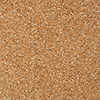 Granite Effect
Granite Effect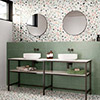 Terranzo Effects
Terranzo Effects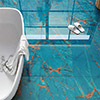 Glass Effect
Glass Effect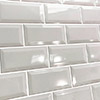 Subway Tiles
Subway Tiles Victorian Tiles
Victorian Tiles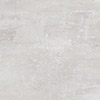 Concreate Effect
Concreate Effect Brick Effect
Brick Effect Square Tiles
Square Tiles Rectangle Tiles
Rectangle Tiles Hexagonal Tiles
Hexagonal Tiles Plank Tiles
Plank Tiles Fan Shaped Tiles
Fan Shaped Tiles Matt
Matt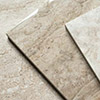 Polished/ Glose
Polished/ Glose Kitchen Wall Tiles
Kitchen Wall Tiles Kitchen Floor Tiles
Kitchen Floor Tiles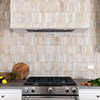 Splashback Tiles
Splashback Tiles Wood Effect
Wood Effect Marble Effect
Marble Effect Outdoor Wall Tiles
Outdoor Wall Tiles Fireplace
Fireplace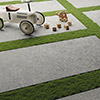 Garden Tiles
Garden Tiles Outdoor Floor Tiles
Outdoor Floor Tiles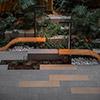 Patio Tiles
Patio Tiles Porch Tiles
Porch Tiles Hallway
Hallway Leaving room
Leaving room Balcony Tiles
Balcony Tiles Deck Tiles
Deck Tiles Outdoor Slab Tiles
Outdoor Slab Tiles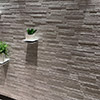 Wall Cladding
Wall Cladding